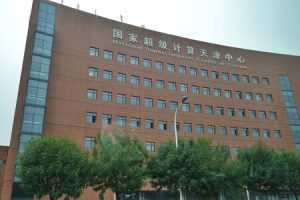Scientists have discovered that certain proteins are essential for the correct formation of the embryo in vivo.
The proteins in question, the Yap, belong to a family of transcriptional activators involved in the proper maintenance of adult tissues and in the embryogenesis process.
During gastrulation, a critical stage of development, since the construction plan of the future organism is defined, is when the initially amorphous mass of precursor cells condenses in the central axis of the embryo and it is decided what will come before and what will come before. posterior, which dorsal and which ventral. “Our work describes the role of the Yap family proteins during these gastrulation movements. The function of Yap is, at the same time, to generate and detect intracellular tension specifically in the cells that migrate towards the midline of the embryo and to maintain it by establishing a positive feedback mechano-regulatory mechanism”, says María Almuedo-Castillo, a researcher at the Centro Andaluz of Development Biology (CABD), a joint center of the Higher Council for Scientific Research (CSIC), the Junta de Andalucía and the Pablo de Olavide University, all of these entities in Spain.
Without Yap, the cells are not able to migrate to their final destinations and the embryonic axis does not form.
The research team, headed by Ana Sousa-Ortega from CABD, identified Yap as responsible for activating a transcriptional program that is necessary to guarantee cell migration during gastrulation.
“Identifying the signals responsible for cell migration, especially those that depend on mechanical forces, is important, not only to understand the basis of embryo and organ formation, but also to identify the necessary targets to fight against uncontrolled migration processes such as This is the case of cancerous metastasis and many other diseases related to problems during embryonic development”, concludes another of the co-authors of the study and CSIC researcher at the CABD, Juan R. Martínez-Morales.
Image of the gastrulation process. The white dots mark the cells with Yap proteins and the colored lines are the trajectories of these cells during gastrulation. (Image: CABD)
Future scientific opportunities
Yap appears at the epicenter of the control of morphogenetic mechanisms as complex as gastrulation, and also with a regulation system that seems linked to the morphology of the cell and its nuclear geometry. This opens up many opportunities to study how Yap is able to respond to mechanical forces and to analyze the molecular bases that govern the activation of this morphogenetic program.
These proteins are not only key regulators in gastrulation processes, but also in organogenesis, control of proliferation, cell death, and their malfunction is related to many diseases. Therefore, understanding the mechanisms that govern its mode of regulation will help to advance in the field of developmental biology, biomechanics, and biomedicine.
The study is titled “A Yap-dependent mechanoregulatory program sustains cell migration for embryo axis assembly”. And it has been published in the academic journal Nature Communications. (Source: Erika López / CSIC)











![[Img #68556]](https://thelatestnews.world/wp-content/uploads/2023/05/They-identify-a-key-piece-of-cell-migration-during-embryo.jpg)
